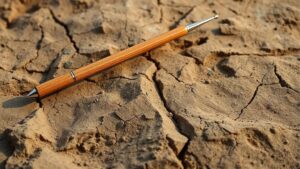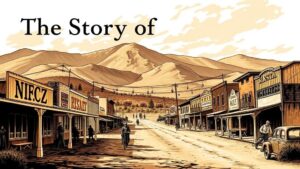Recognizing Ancient Lake Beds for Buried Gold Deposits
Recognizing Ancient Lake Beds for Buried Gold Deposits
The search for gold has captivated human imagination for centuries, and while much of the focus has been on extracting visible deposits, a hidden realm exists beneath the surface: ancient lake beds. This article explores the significance of ancient lake beds in the context of finding buried gold deposits, outlining how geological and hydrological features can guide prospectors in their search.
The Importance of Ancient Lake Beds
Ancient lake beds, often referred to as paleolakes, were once filled with water, creating an environment conducive to the deposition of sediments and minerals, including gold. These lake beds can provide crucial insights into the geological history of an area and are often rich in valuable resources due to their depositional characteristics.
A major advantage of targeting ancient lake beds is their unique sedimentary structures, which can indicate historical conditions that favored gold deposition. Studies show that many gold-rich areas globally align with ancient lake beds, effectively creating a roadmap for potential prospectors.
Geological Indicators
To recognize ancient lake beds, prospectors should look for specific geological indicators:
- Stratification: Layers of sediment can indicate historical water levels.
- Fossils: The presence of aquatic or semi-aquatic fossils can suggest past lake activity.
- Mineral Composition: Analyzing the types of minerals found in the sediment can help determine past hydrological conditions.
For example, in the Sierra Nevada region of California, the presence of bluish clay in some hillside deposits was a strong indicator of prior lake environments and thus a point of interest for gold prospecting.
Hydrological Features
Also to geological indicators, hydrological features play a significant role in identifying ancient lake beds. Key characteristics include:
- Topography: Low-lying areas of land are often remnants of past lake beds.
- Stream Patterns: Riverbeds that abruptly change direction may indicate former lake boundaries.
- Soil Moisture: Certain areas retain moisture longer, suggesting sediment accumulation.
An exemplary case is found in the Great Basin of the United States, where many gold deposits occurred near ancient lake beds formed during the Miocene Epoch. Prospectors have successfully mined gold from areas that displayed these hydrological features.
Modern Techniques in Discovering Ancient Lake Beds
Advancements in technology have provided new methods for identifying ancient lake beds, enhancing the gold prospecting industry:
- Geophysical Surveys: Techniques such as ground-penetrating radar (GPR) allow for the detection of buried sediments.
- Remote Sensing: Satellite imagery can highlight ancient water bodies based on vegetation and land formations.
- Soil Sampling: Scientific analysis of soil can reveal mineral content and historical landscape changes.
For example, geophysical surveys using GPR have successfully located potential gold-rich stratigraphy in areas previously deemed unprospective, leading to significant finds.
Potential Challenges and Considerations
While recognizing ancient lake beds can be a fruitful venture, prospectors must also consider potential challenges:
- Legal Regulations: Verify local mining laws and regulations before starting any prospecting activities.
- Environmental Impact: Assess the potential ecological consequences of mining activities in sensitive areas.
- Investment Costs: Equipment and exploration can require significant capital without guaranteed outcomes.
Understanding these challenges is crucial for responsible prospecting, ensuring that efforts to uncover buried gold deposits do not compromise natural environments.
Actionable Takeaways
In summary, recognizing ancient lake beds presents an exciting opportunity for uncovering buried gold deposits. By leveraging geological indicators, hydrological features, and modern technology, prospectors can enhance their chances of success.
Some actionable steps for aspiring prospectors include:
- Conduct thorough research on historical lake beds in desired mining areas.
- Use technology such as GPR and remote sensing tools to aid in locating ancient lake deposits.
- Stay informed about local regulations and best environmental practices in prospecting.
The pursuit of gold continues to evolve, and understanding the landscape of ancient lake beds will lead to more informed and successful prospecting endeavors.


